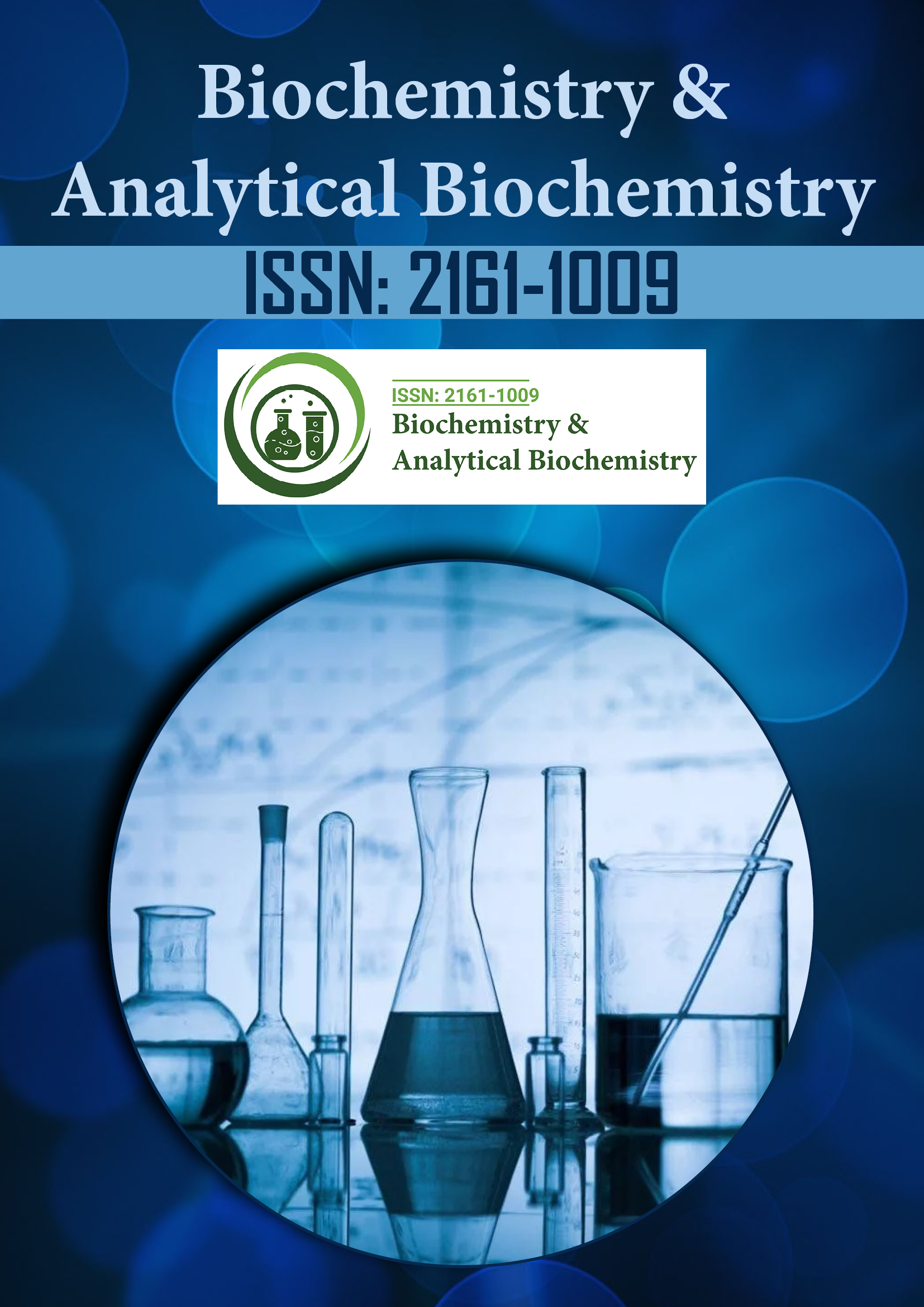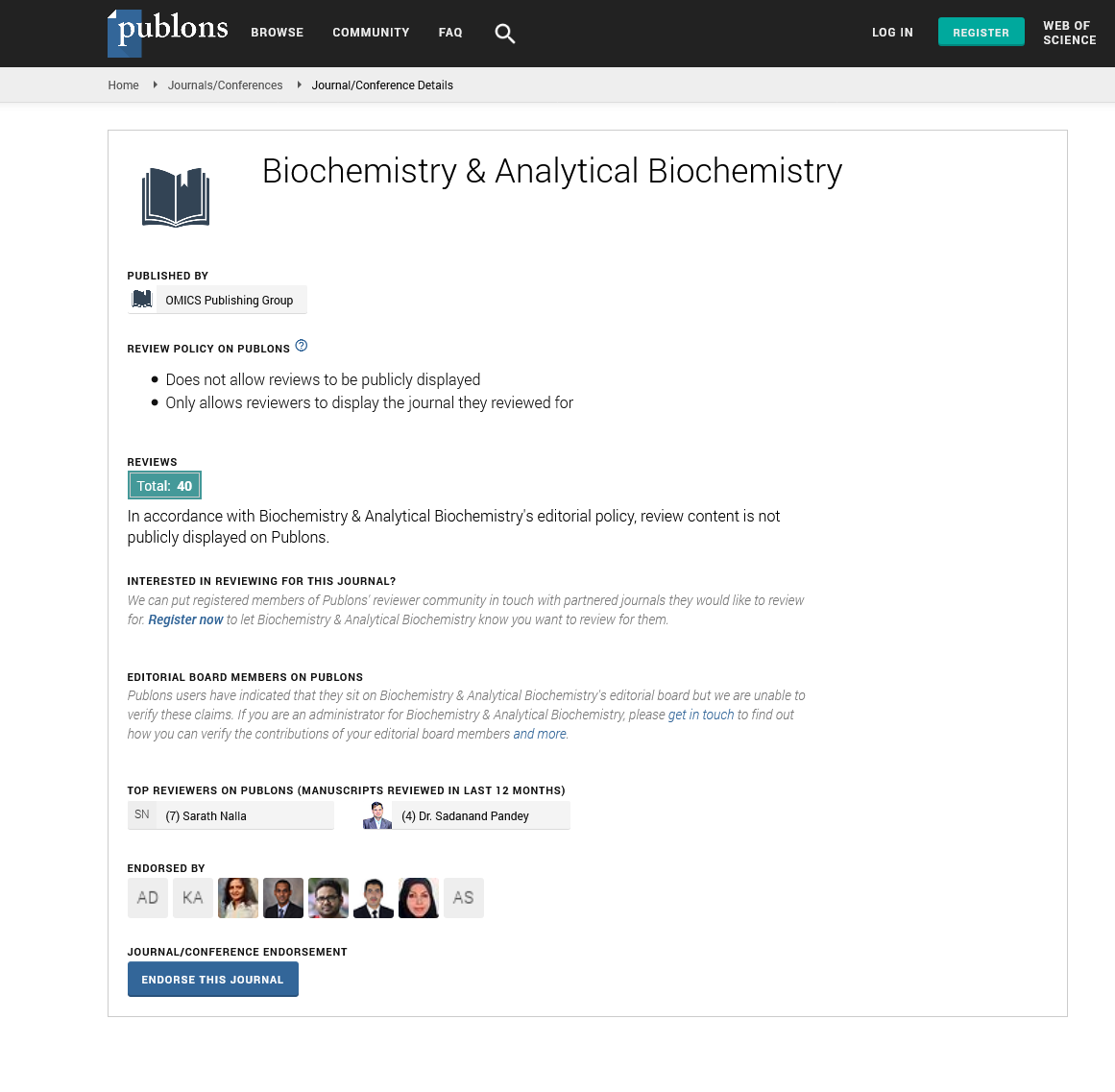Indexed In
- Open J Gate
- Genamics JournalSeek
- ResearchBible
- RefSeek
- Directory of Research Journal Indexing (DRJI)
- Hamdard University
- EBSCO A-Z
- OCLC- WorldCat
- Scholarsteer
- Publons
- MIAR
- Euro Pub
- Google Scholar
Useful Links
Share This Page
Journal Flyer

Open Access Journals
- Agri and Aquaculture
- Biochemistry
- Bioinformatics & Systems Biology
- Business & Management
- Chemistry
- Clinical Sciences
- Engineering
- Food & Nutrition
- General Science
- Genetics & Molecular Biology
- Immunology & Microbiology
- Medical Sciences
- Neuroscience & Psychology
- Nursing & Health Care
- Pharmaceutical Sciences
Opinion Article - (2025) Volume 14, Issue 2
Exploring the Dynamics of Protein Folding and Misfolding in Human Diseases
Emma Rodriguez*Received: 30-May-2025, Manuscript No. BABCR-25-29500; Editor assigned: 02-Jun-2025, Pre QC No. BABCR-25-29500 (PQ); Reviewed: 16-Jun-2025, QC No. BABCR-25-29500; Revised: 23-Jun-2025, Manuscript No. BABCR-25-29500 (R); Published: 30-Jun-2025, DOI: 10.35248/2161-1009.25.14.584
Description
Protein folding represents one of the most fascinating processes in molecular biology, offering insights into how linear chains of amino acids transform into functional three-dimensional structures. This process is not only critical for the proper function of proteins but also essential for maintaining cellular homeostasis. When proteins fold incorrectly, they can form misfolded structures that contribute to the development of a wide range of human diseases, including neurodegenerative disorders such as Alzheimer’s disease, Parkinson’s disease, and Huntington’s disease. The exploration of protein folding and misfolding has therefore become a central theme in biochemistry and analytical biochemistry research, driving investigations that aim to connect molecular details with clinical outcomes. Folding is a spontaneous process guided by the sequence of amino acids, hydrophobic interactions, hydrogen bonding, and van der waals forces. However, the crowded cellular environment creates both opportunities and risks, as molecular chaperones are often required to ensure correct folding. Chaperones act as molecular bodyguards, preventing aggregation and providing an environment that reduces the likelihood of misfolded intermediates.
Despite these protective mechanisms, errors still occur, and misfolded proteins can accumulate into aggregates or amyloid fibrils, which are toxic to cells. In the case of Alzheimer’s disease, misfolded amyloid-beta peptides form insoluble plaques in brain tissue, disrupting neural communication and leading to memory decline and cognitive impairment. Similarly, in Parkinson’s disease, the misfolding and aggregation of alpha-synuclein results in Lewy body formation, further highlighting the pathological consequences of protein misbehavior. Analytical biochemistry techniques have proven essential for investigating these processes. Tools such as X-ray crystallography, cryo-electron microscopy, nuclear magnetic resonance spectroscopy, and mass spectrometry allow researchers to capture snapshots of proteins in various states of folding and misfolding. Additionally, fluorescence spectroscopy and single-molecule studies provide dynamic perspectives, enabling researchers to monitor folding pathways in real time. These tools have shed light not only on the structural transitions involved but also on the energetic landscapes that dictate the journey from unfolded to folded states.
Beyond neurodegenerative disorders, protein misfolding plays a role in metabolic diseases, cancer, and even infectious conditions such as prion diseases. Prions are particularly intriguing because they represent misfolded proteins capable of propagating their abnormal conformations to other proteins, essentially functioning as infectious agents. This phenomenon challenges traditional views of disease transmission and emphasizes the powerful impact of protein folding on biology and health.
Understanding these processes opens doors to therapeutic strategies aimed at preventing or reversing misfolding. Small molecules known as pharmacological chaperones are being explored for their ability to stabilize proper protein conformations, while immunotherapies target misfolded aggregates for clearance. Advances in nanotechnology and drug delivery further enhance the prospects of targeting misfolded proteins in specific tissues, such as the brain, where crossing the blood-brain barrier remains a formidable challenge. Despite progress, significant questions remain unanswered. Some proteins have an intrinsic tendency to misfold more readily due to factors such as unstable structural domains, mutations that alter folding pathways, or the influence of the cellular environment. Once misfolding occurs, the cell employs surveillance mechanisms that determine the protein’s fate—whether it will be degraded through proteasomal or lysosomal pathways, sequestered into aggregates, or neutralized by molecular chaperones. Therapeutic strategies can be developed to selectively recognize and target misfolded conformations, ensuring the correction, clearance, or stabilization of aberrant structures while preserving the normal function of properly folded proteins.
These questions drive the ongoing integration of biochemistry, molecular biology, and medicine into a unified effort to address protein misfolding disorders. The study of protein folding and misfolding not only deepens our understanding of molecular biology but also highlights the profound implications of this process for human health. By combining advanced analytical biochemistry tools with translational research, scientists are uncovering pathways that may eventually lead to treatments for some of the most devastating diseases known to humankind. As research continues to expand, protein folding remains a vivid reminder of the delicate balance between order and chaos within the molecular world.
Citation: Rodriguez E (2025). Exploring the Dynamics of Protein Folding and Misfolding in Human Diseases. Biochem Anal Biochem. 14:584.
Copyright: © 2025 Rodriguez E. This is an open access article distributed under the terms of the Creative Commons Attribution License, which permits unrestricted use, distribution, and reproduction in any medium, provided the original author and source are credited.

